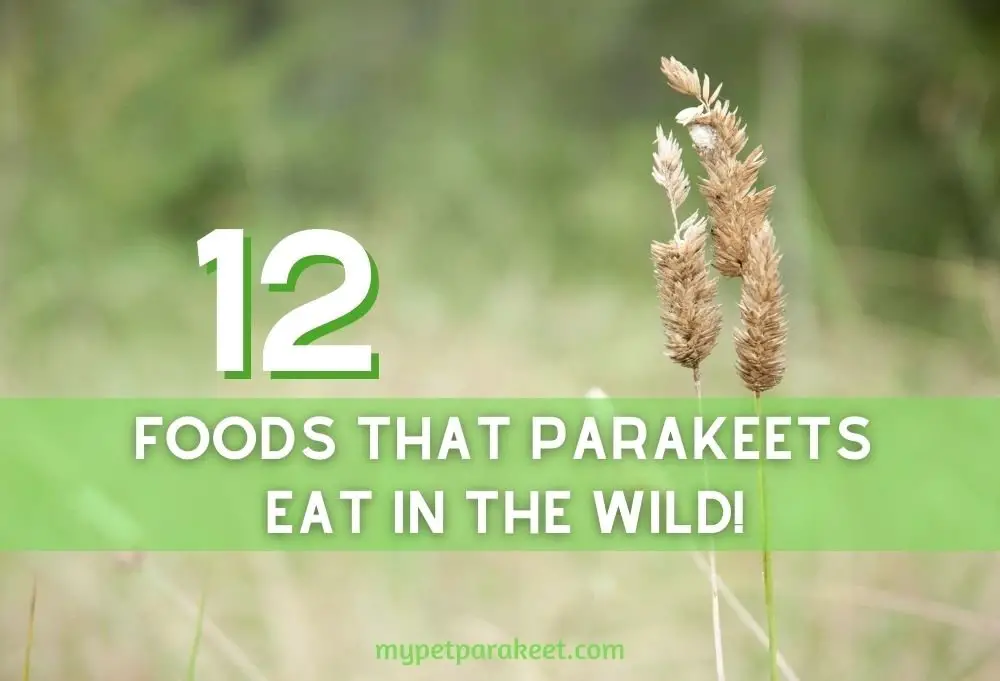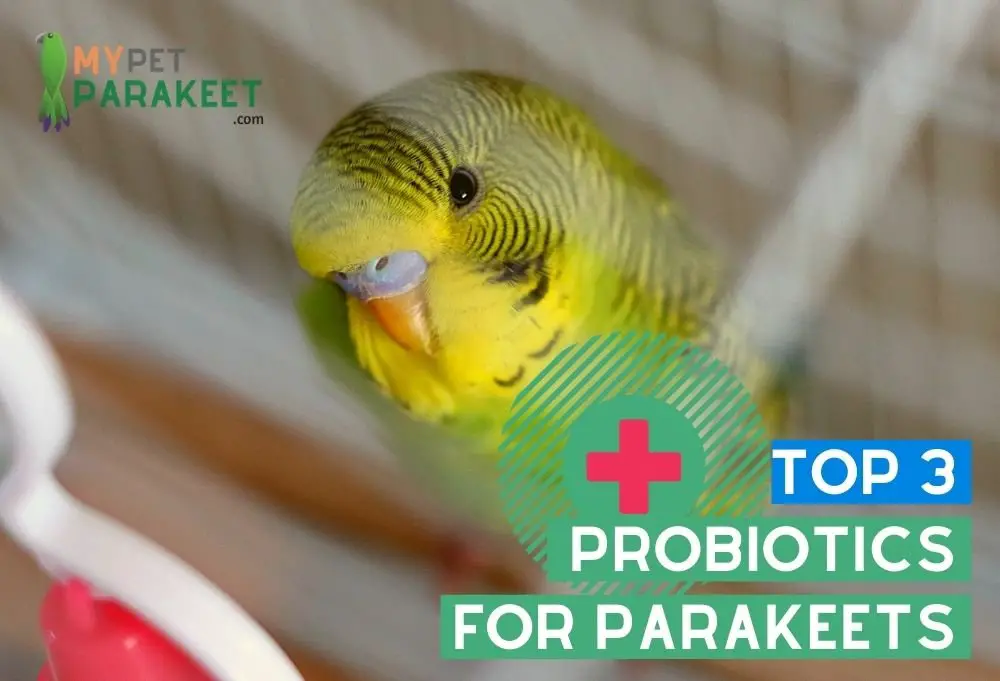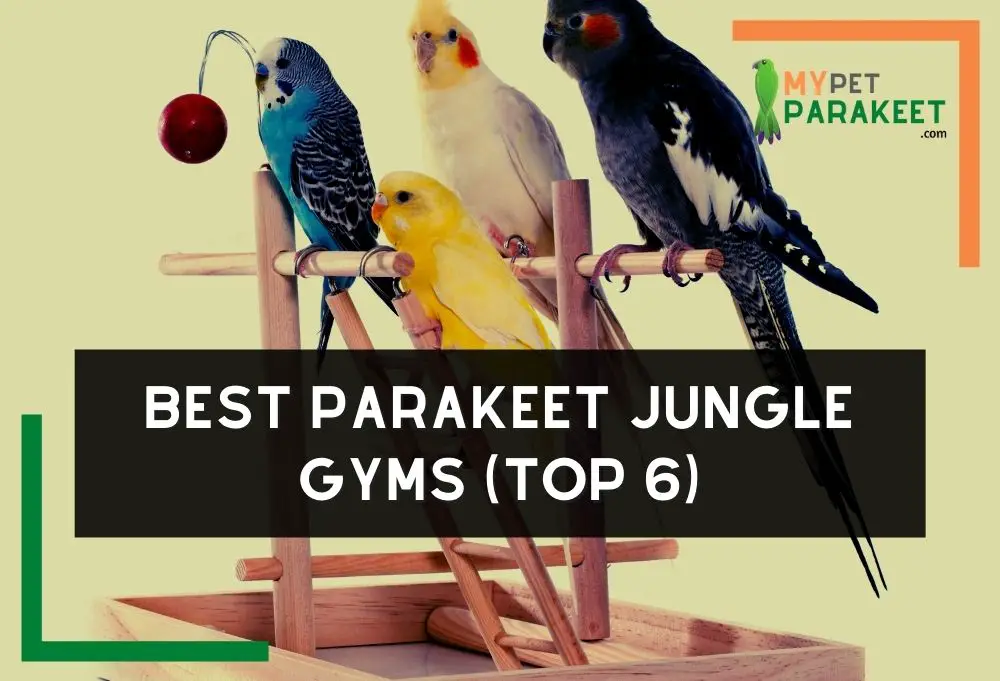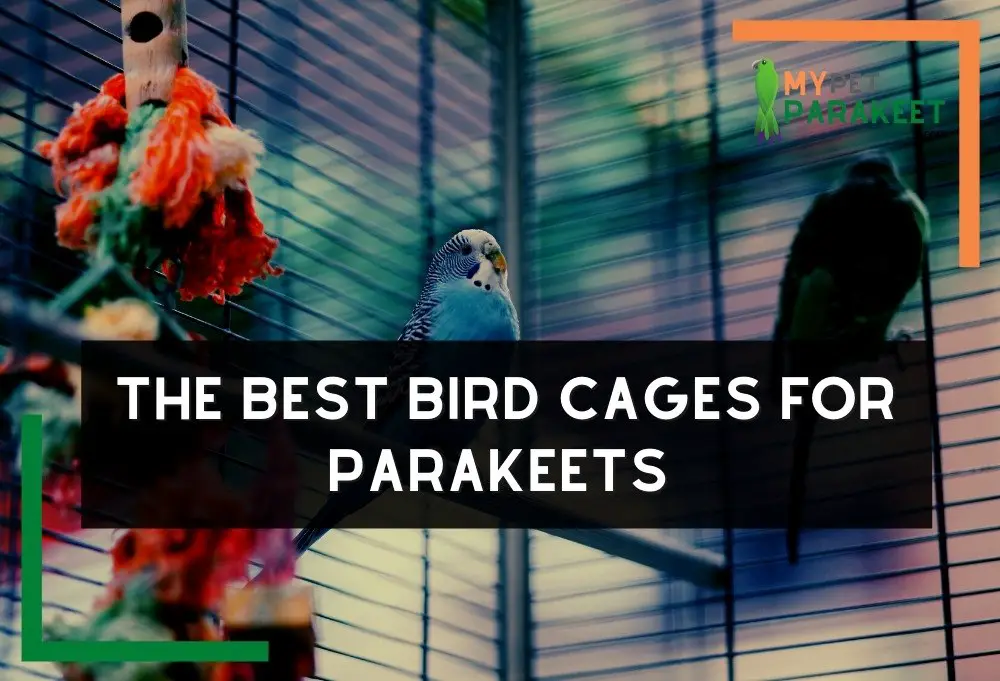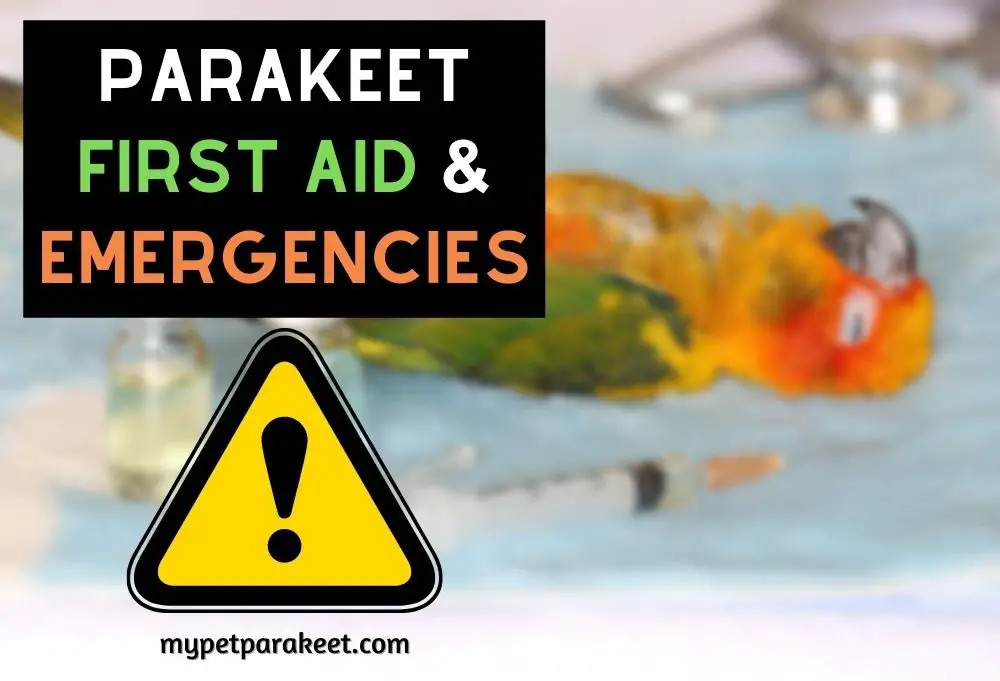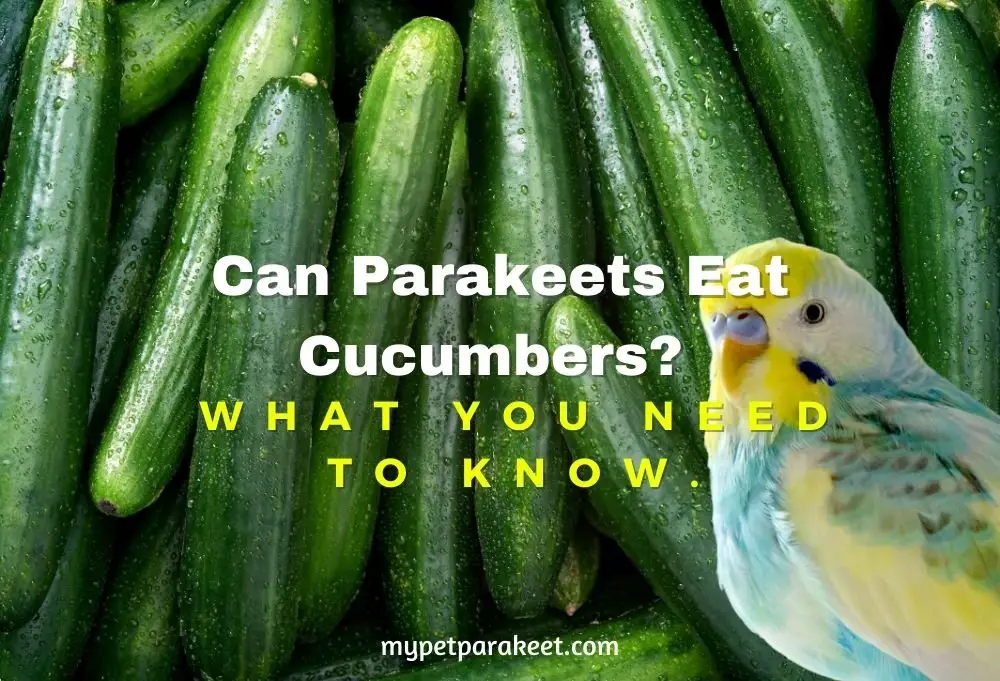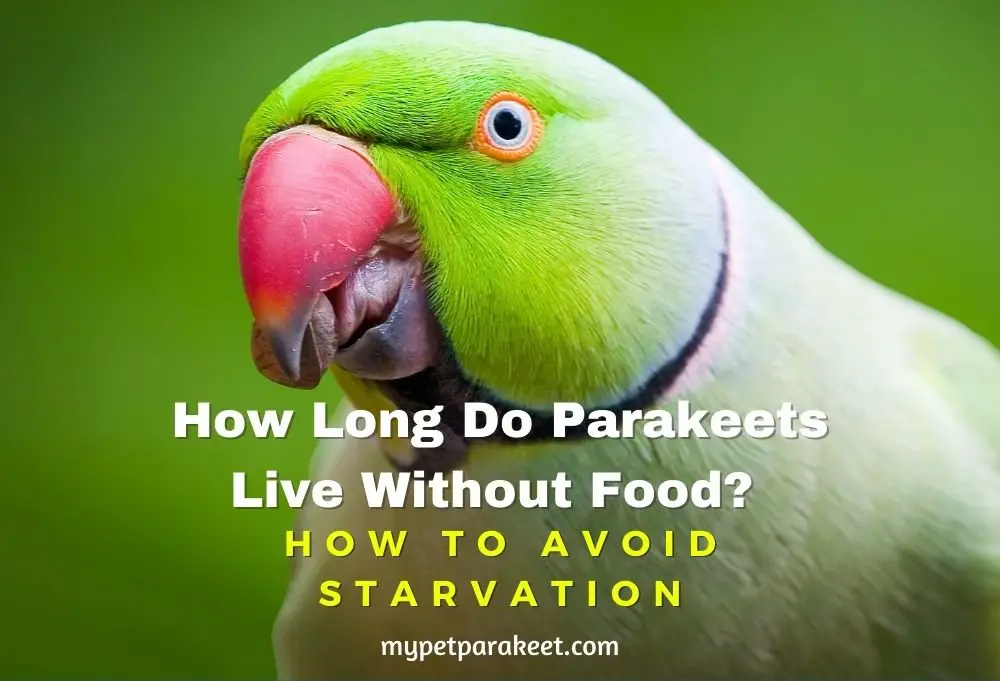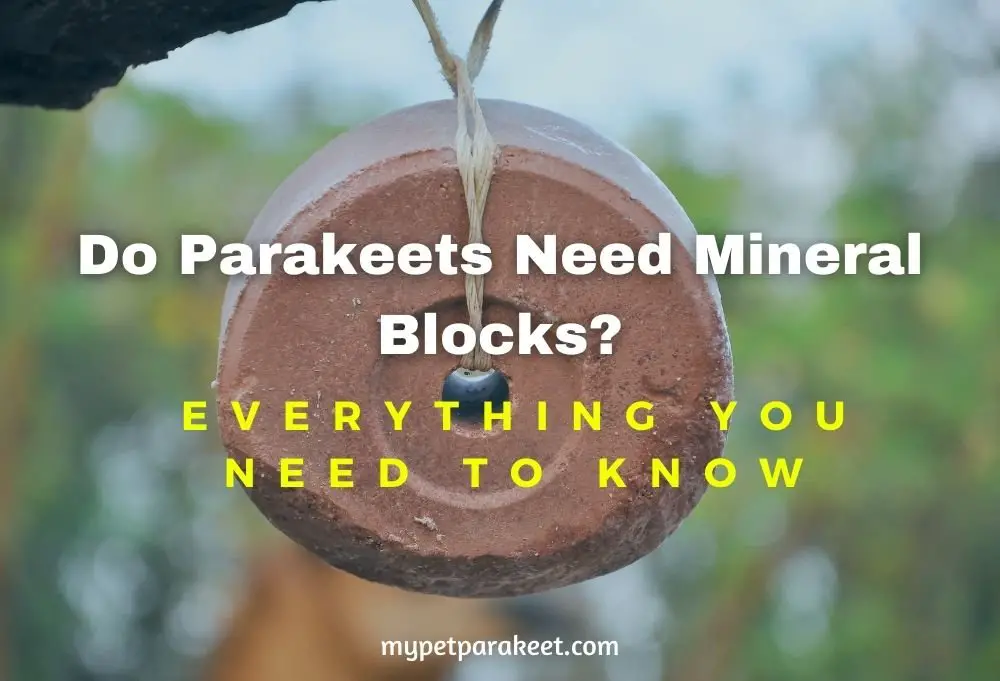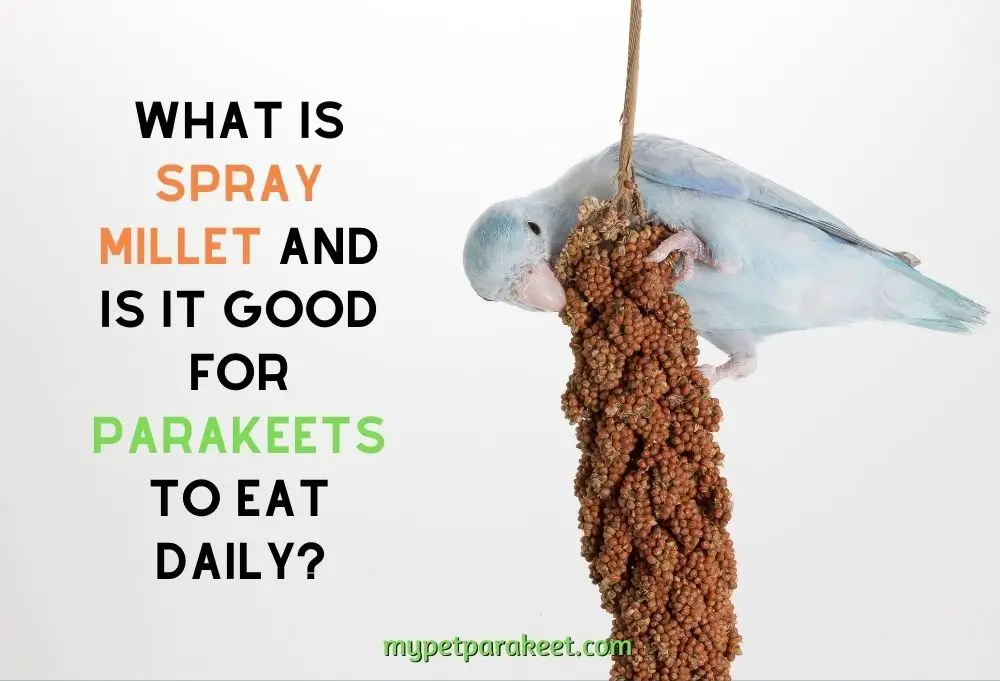Many new owners wonder what parakeets eat in the wild, if you can relate, read on! Many parakeet owners seek to emulate their bird's natural habitat as closely as possible as they believe that will make their bird the happiest.
In this post, we will discuss what parakeets eat in the wild and what foods they like outside of captivity!
Parakeet diets are varied, and what they eat in the wild varies by region.
In some regions, parakeets are mainly seed-eaters, but in others, their diets can also include insects, nectar from flowers like cactus flowers or beehives -or even fruits!
12 Foods That Parakeets Eat In The Wild
1) Grass
Grass is a food source for many wild parakeets. Grass can be picked up and eaten or shredded with the feet then ingested through the bill.
There are many types of grass that have been consumed by wild parrots such as rice, corn and bamboo grass which all provide different nutritional benefits to the parakeet such as protein, fiber, and vitamins.
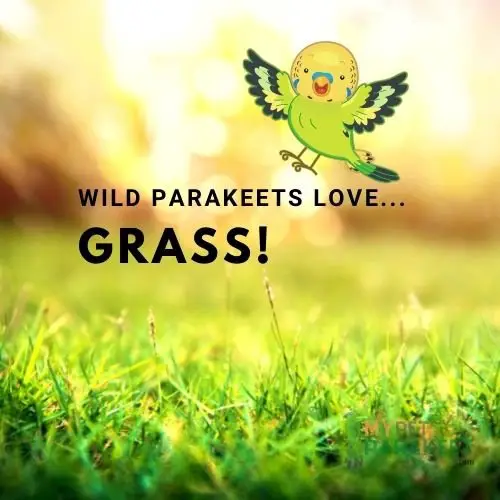
Parakeets can be seen eating grass in their natural habitat or what they might find near a local bird feeder where it is typically mixed with seed. In captivity, many owners offer some fresh greens to their pet parakeet such as kale leaves that are high in calcium which helps keep the nails healthy. They do this to emulate the diet and nutrition the parakeet would get in the wild.
The grass is also commonly sold in pet stores as a food supplement for parakeets to help them with what they are lacking in their captive diet.
2) Plant Seeds
A variety of seeds are a part of what parakeets eat in the wild.
They can be found on the ground, retrieved from trees, or plucked off bushes and eaten whole.
Most bird owners buy things like millet spray to emulate the very nature of parakeets plucking seeds off bushes.
Parakeets are also known to enjoy sunflower seeds as well as the seed from a New Zealand tree called ‘Totara' and what these two have in common is that they're high in fat content. In the wild, parakeets tend to have a high-fat diet as this helps them to deal with what the climate throws at them.
Pumpkin seeds, flaxseed and hemp seed which is high in protein are all types of seeds that are readily available in nature and can be purchased online or at pet stores to supplement what a captive parakeet might be lacking.
3) Caterpillars
Caterpillars are another food source that parakeets would eat in the wild if they were lucky enough to find some!
They mainly consume them as small prey but sometimes will also eat moths, flies, and other larger insects.
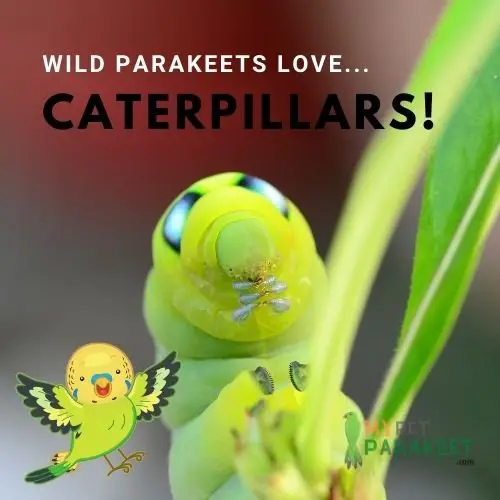
Parakeets native to Australia love a type of caterpillar that lives there called an Australian Brush-tailed Caterpillar, but they are happy to eat any and every kind of caterpillar they can find.
Parakeets love the crunchy texture and what they would call the “salty” taste of caterpillars!
Caterpillars are also known for being high in protein and vitamins A & C which makes them a nutritious food choice!
Additionally, they can be used as an enrichment activity by placing them in a feeding toy!
4) Ants
Parakeets will sometimes eat ants as well. Ants are a great source of protein and also contain minerals like phosphorus, calcium, sodium and potassium.
In the wild, ants can be found on leaves or bark of trees and plucked off to consume.
Additionally, similar to caterpillars, live ants have been used by experts for behavior modification and enrichment which means they can be used as what most people would see as a treat to help keep your bird entertained.
5) Caterpillar Eggs
Caterpillar eggs are a favorite treat for many animals, including parakeets, cockatoos and jays.
They can be found high up on trees or low to the ground with leaves gathered around them.
Parakeet owners should plant lots of indigo berry bushes as they love its fruit!
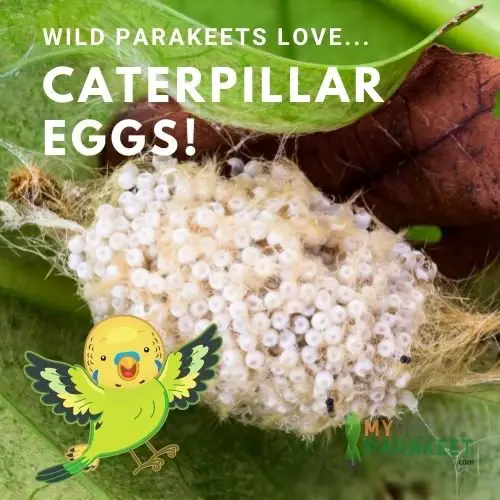
Caterpillar eggs are high in protein and what many birds seek out when being fed a diet of what is commonly found outside for them to consume.
6) Waxworms
Parakeets love waxworms, which look like what you might imagine a mealworm to be.
They are fat and orange-colored, with small black stripes on the top of their body. You can buy these worms (or pupae) at pet stores or bait shops for fishing purposes.
Waxworm larvae also live in honeycomb that they chew on.
Waxworms are what parakeets might eat in the wild if they were lucky enough to find some!
Most parakeet owners simply opt for mealworms as these are widely available in most pet stores.
7) Crickets
Crickets are a popular food for parakeets in the wild. They can also be purchased at most pet stores, and they are easy to find in the outdoors in most people's backyards as well.
Crickets will provide your bird with protein and calcium which is important for their bone health.
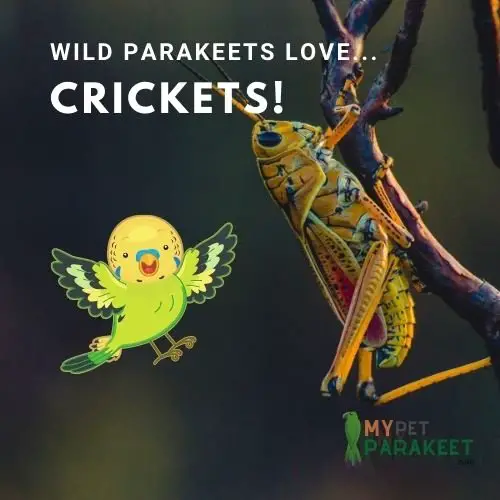
In the wild, they can be found on plants and leaves but they also like to hide!
8) Grasshoppers
Similar to crickets, grasshoppers are a favorite food of wild parakeets.
They are a high-energy snack that provides the birds with protein and fat.
9) Wild chia
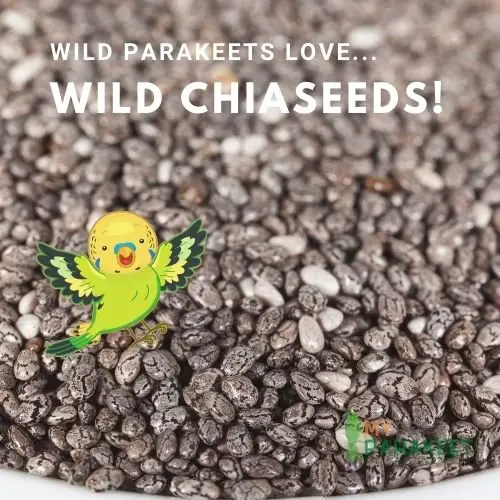
Parakeets like to eat wild chia seeds in the desert. These are found anywhere from Mexico and Central America, through Texas and up into Canada.
Chia has a very high-fat content, which parakeets find intriguing!
10) Wild carrots
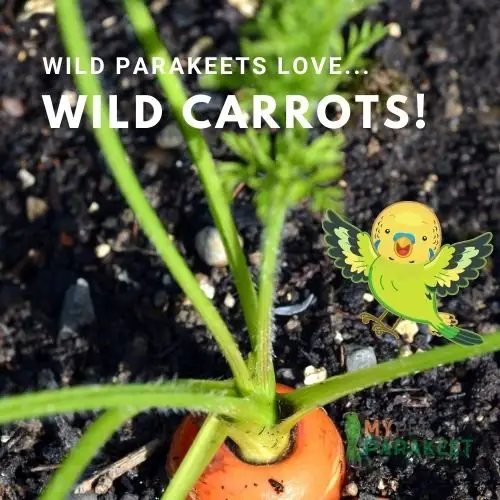
Wild carrots can be found in the deserts of California, and are a great source of vitamin A.
Parakeets also enjoy eating wild carrot seeds and bathing in the greens of the carrot tops.
11) Acorns and Brazil nuts
Acorns are high in calcium, phosphorus, iron, and what's called tannic acid.
They also provide a healthy dose of Omega-71 fatty acids!
Parakeets can eat these from the ground or they may find them on trees to pluck off.
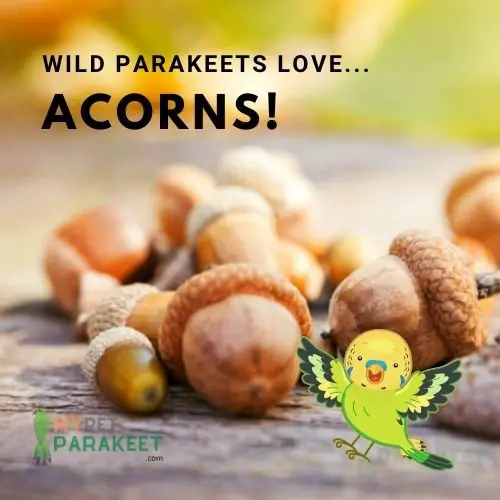
Brazil nuts are also high in selenium, which means that your bird is getting what it needs for healthy immune function and there's no need for an additional supplement!
12) Wild figs (and leaves!)
Figs trees grow all over Africa and some parts of Asia as well.
They have a sweet flavor to them that parakeets enjoy.
They also like to eat the leaves of the fig trees!
Fig leaves are what parakeets will flock to when they want some fresh greens, and not just for their sweet taste. These leaves have an incredible amount of vitamin A as well as a number of other vitamins as well in them!
12) Wild Plums
Plums grow in what we would call the temperate zones, and can be found all over Europe. Parakeets enjoy eating wild plum seeds!
FAQ
Should I Let My Parakeet Find Food Outside?
If you let your parakeet out of the cage to explore, is it safe to let it find its own food?
When you let your parakeet explore the outside world, it is important to make sure they only have access to what would be considered “safe” food. There are many foods that are toxic to parakeets but as they are very curious birds, they might explore what is in their environment.
If you know you do not have any plants that are toxic to your parakeet (and there are no predators around), it is a good idea to let them explore the backyard.
Are there any foods found in the wild that you should avoid feeding your pet?
Yes, it's important not to give a bird food that has an allergic ingredient or can't be digested easily such as avocados, garlic, or onions.
What Is A Good Diet For My Pet Parakeet To Emulate Their Natural Habitat?
If your parakeet was not bred in captivity and is used to eating natural findings, try continuing to feed them what they would typically find outside such as sunflower seeds, nuts, wild fruits, and vegetables.
Should You Feed Your Parakeet A Similar Diet To What It Would Have Eaten In The Wild?
Yes, even if your parakeet was bred in captivity, it is important to feed a similar diet to what they would have eaten in the wild, i.e. seeds, bugs, fruit, etc.

